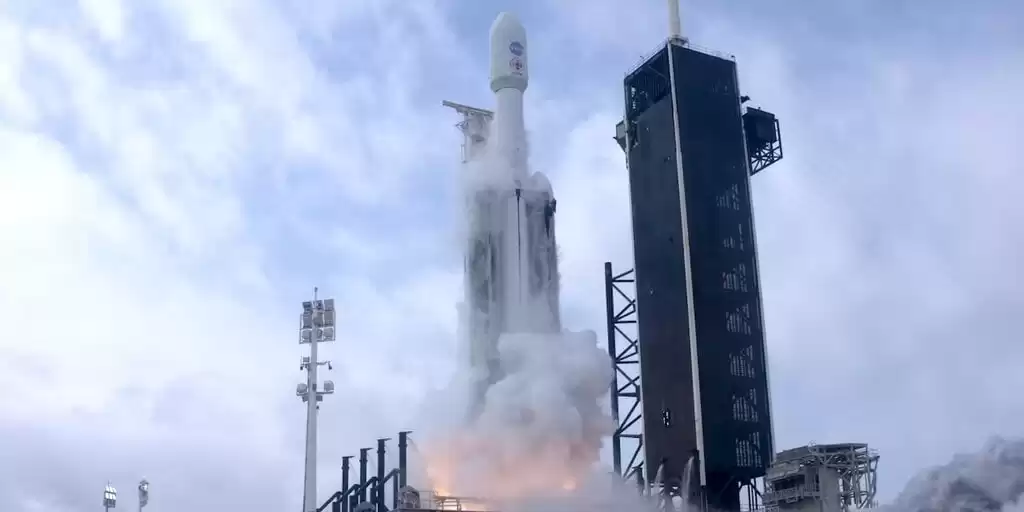NASA Tests Deep Space Communications on Six-Year Asteroid Mission
NASA and partner agency JPL launched an experimental laser transmitter on a SpaceX rocket to test a new laser-based transmission system for deep space communication. The system promises higher rates of data delivery from space.
Humans are on the brink of becoming a species capable of venturing beyond our own planet, and in order to achieve this, maintaining communication with Earth is crucial. In a significant step towards this goal, NASA, in collaboration with the Jet Propulsion Laboratory (JPL), embarked on an ambitious mission with SpaceX to explore a metal-rich asteroid. However, this mission is not solely focused on exploration; it also aims to showcase a groundbreaking laser-based transmission system called Deep Space Optical Communications (DSOC), which has the potential to revolutionize data delivery from deep space.
The DSOC project's experimental laser transmitter was launched aboard SpaceX's Falcon Heavy rocket from the Kennedy Space Center in Florida. This rocket was carrying the Psyche mission, which involves a six-year journey to the asteroid and will serve as a real-world test for the DSOC transmitter.
Malcolm Wright, the project lead for DSOC at JPL, explained that this experiment marks NASA's first foray into optical communications beyond lunar distances. The advantage of optical communications lies in its ability to surpass the limitations of radio and microwave links, which have been the primary means of communication until now. Radio and microwaves require larger ground dishes and spacecraft antennas, which restrict the data rate that can be transmitted back to Earth. By utilizing lasers and detectors in optical communications, more information can be transmitted under higher frequencies, akin to the transition from cable internet to fiber optics.
However, optical communications present their own set of challenges. Precise pointing of the system is crucial, as opposed to the wide beam width of conventional radio frequency antennas. Optical communication payloads require pinpoint accuracy when targeting Earth, necessitating the use of highly sensitive detectors to count individual particles of light known as photons. These detectors operate differently from traditional imaging cameras, as they detect single photons per pixel frame.
Weather conditions also pose a challenge for optical communications. While signals can pass through the atmosphere, dense clouds can block them, leading to signal fading caused by atmospheric disruptions. To counteract this fading signal, data signals must be encoded.
Despite these challenges, optical communications offer several advantages. They are ideal for transmitting covert and sensitive communications due to their direct line of sight and the ability to match specific wavelengths and directions, unlike radio waves, which are more widely spread.
In a related development, Infinity Labs, a Web3 company, launched Dreambound Orbital with the aim of sending blockchains into space. In collaboration with NASA, Dreambound Orbital recently launched a collection of NFTs (non-fungible tokens) into space. Inspired by the Voyager Mission's "Golden Record" in 1977, these digital collectibles were beamed to the International Space Station from contributors such as the Solana Foundation, Metaplex, Magic Eden, World of Women, and OpenSea. This project highlights the intersection of space exploration and the Web3 community.
The DSOC project is just one of the many initiatives originating from JPL, a Pasadena-based institution focused on NASA's robotics and exploration missions. With its roots tracing back to the 1930s and the pioneering work of individuals like Theodore von Kármán and Jack Parsons, JPL has been at the forefront of scientific advancements. Since its integration into NASA in 1958, JPL has continued to push the boundaries of space exploration.
While the launch on Friday serves as a demonstration of DSOC technology, Wright emphasized that similar equipment will be utilized in the upcoming Artemis program. This program aims to return NASA to the moon's orbit and eventually land on the moon's surface once again. The successful demonstration of DSOC capabilities will pave the way for its implementation in future missions, with numerous projects already in the pipeline.
In conclusion, as humanity embarks on its journey to become an interplanetary species, communication with Earth remains paramount. The DSOC project, in collaboration with SpaceX, represents a significant step towards achieving this goal. By harnessing the power of optical communications, NASA and JPL are revolutionizing data delivery from deep space and paving the way for future missions and discoveries.











Comments on NASA Tests Deep Space Communications on Six-Year Asteroid Mission